
Honey Play Box Pearl Wearable Magnetic App-Controlled Panty Vibrator
£39.98
secrets-shop.co.uk
Delivery from £4.50

Honey Play Box Pleasure Pivot App-Controlled Couples Vibrator Blue
£64.99
secrets-shop.co.uk
Free Delivery

£24.99
vipbottles.co.uk
Delivery from £4.89
Honey Play Box Tempo App-Controlled Tapping Finger Silicone G-Spot Vibrator
£74.99
secrets-shop.co.uk
Free Delivery

Honey Play Box Trilux App-Controlled Tapping Finger Rabbit Vibrator with Anal Beads
£69.98
secrets-shop.co.uk
Free Delivery
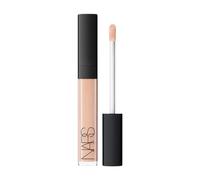
£24.64
buytogive.co.uk
Delivery from £3.50

£8.53
Glamot.com
Delivery from £29.18
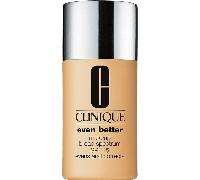
£24.64
buytogive.co.uk
Delivery from £3.50
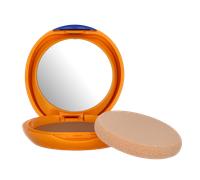
£19.45
buytogive.co.uk
Delivery from £3.50

£65.00
GBP 65.00 / Unit
ebay.co.uk
Delivery from £5.00
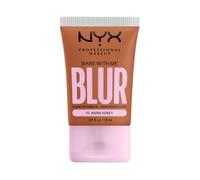
£9.86
Amazon-marketplace.co.uk
Delivery from £4.49
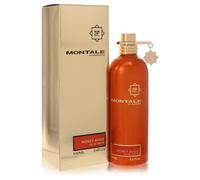
£111.13
£1,111.30 / 1 l
parfumdreams.co.uk
Free Delivery
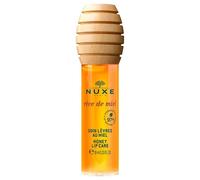
£10.08
buytogive.co.uk
Delivery from £3.50
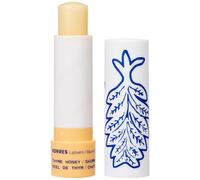
£6.50
parfumdreams.co.uk
Delivery from £3.95
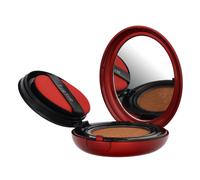
£16.26
buytogive.co.uk
Delivery from £3.50
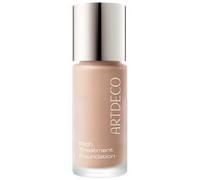
£11.93
carethy.co.uk
Delivery from £4.99
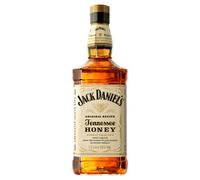
£34.50
joybuy.co.uk
Free Delivery
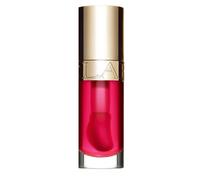
£16.59
gorgeousshop.com (UK)
Delivery from £2.95

£34.85
salontotal.co.uk
Free Delivery
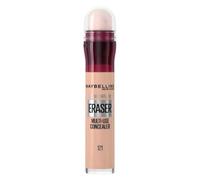
£7.19
Amazon-marketplace.co.uk
Delivery from £4.49

£11.83
Glamot.com
Delivery from £8.42

£23.00
7.67 GBP/10.0 ml
amazon.co.uk
Free Delivery

£13.67
Amazon-marketplace.co.uk
Delivery from £4.49
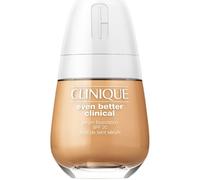
£27.64
sabina.com/en
Delivery from £7.50

label.m Honey & Oat Moisturising Conditioner moisturizing conditioner with honey and oat extracts 300 ml
£13.99
Glamot.com
Delivery from £8.38
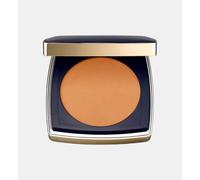
Estée Lauder Double Wear Stay-in-Place Matte Powder Foundation SPF 10 - 5N2 Amber Honey 12g
£43.00
joybuy.co.uk
Free Delivery
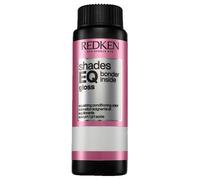
Redken Shades EQ Bonder Inside Gloss demi-permanent color with a bond-builder for strengthening 60 ml, 010WG Honey Gold
£16.92
Glamot.com
Delivery from £8.34
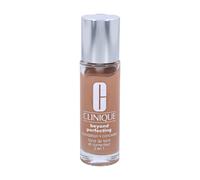
Clinique Beyond Perfecting Foundation and Concealer - CN58 Honey 30ml
£37.50
joybuy.co.uk
Free Delivery

label.m Honey & Oat Moisturising Conditioner moisturizing conditioner with honey and oat extracts 1 l
£28.09
Glamot.com
Delivery from £8.42
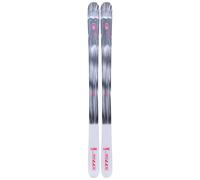
£264.90
snowleader.co.uk
Delivery from £9.99

TIGI Catwalk Oatmeal & Honey Tween Duo shampoo & conditioner for dry hair 2 x 750 ml
£22.90
Glamot.com
Delivery from £16.85
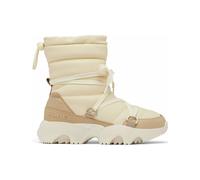
£139.50
snowleader.co.uk
Delivery from £11.99
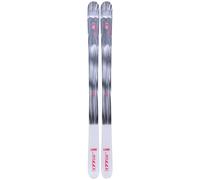
£219.45
ekosport.co.uk
Delivery from £26.99

£104.00
sorelfootwear.co.uk
Free Delivery

£63.00
Laredoute.co.uk
Delivery from £3.99

£315.00
snowleader.co.uk
Delivery from £9.99
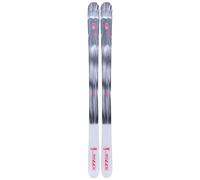
£264.90
snowleader.co.uk
Delivery from £9.99

£315.00
snowleader.co.uk
Delivery from £9.99

£34.99
Schuhstore.co.uk
Delivery from £3.99
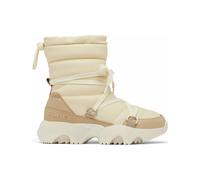
£139.50
snowleader.co.uk
Delivery from £11.99
- 1
- 2
- 3
- 4
- 5
- next page
🤖 Ask ChatGPT
🛍️ What are the most important purchase criteria?
💰 Tell me the best deals!
📋 Create a short summary!
Informations about "honey"
Having searched the market for the cheapest buy prices, 4,944,915 offers were found for comparison.
Furthermore, a large number of products in 48 relevant categories with a price range from £0.01 to £224,244.13 were found.
About "honey"
- Overall, our search showed 15 different e-shops for your product "honey", including secretsales.com (UK), andlight.co.uk, snowinn.com (UK) and freshlick.com.
- If you would prefer an item from a particular manufacturers, you can find 15 e-shops for this product. If you have not yet made a decision, you can also filter your favourite producers and choose between 15 manufacturers.
- The most offers (202,589) were found in the price range from £15.00 to £15.99.
- Furthermore, other users were also interested in the following product: .
- Personalise your product by choosing one of the 5,692 coloration.
Honey
The production of honey is mainly done by industrious bees. They fly over meadows, fields and forests and collect nectar from flowers. The busy little animals use part of it as food. The rest is stored for the winter. To transport the surplus nectar to their hive, they collect it in the so-called honey bladder, a kind of crop. In the process, they release enzymes into the nectar.
Once in the hive, they pump the sap up out of the honey bladder and pass it on to other worker bees. These also transport it back into their honey bladders and release endogenous substances into it.
During this transfer process, part of the water contained in the nectar already evaporates. In order to dry it still further, the worker bees fill it in the hive into open combs and support the drying by fast wing beats - they fan the honey quasi dry. If the water content of the mass is just below 20 percent, the honey is ready and the bees move it to other combs and seal them airtight with wax.
This is the signal for the beekeeper that his bee colony is finished with its work and he can harvest. He removes the honeycombs from the hive, removes the wax plugs and puts them into a honey extractor. Centrifugal forces are created by the spinning and the honey is spun out of the combs. Now the beekeeper filters the mass, fills it afterwards into a glass and finished is the popular natural product.
By the way the designation "cold spun" is not a quality characteristic. Honey cannot be centrifuged warmly at all, since it would melt and not separate properly from the combs. In former times some manufacturers provided their products with this addition, in order to divert from the inferior quality. Some honey producers heat the honey after the centrifuging, so that it remains longer liquid. However, this destroys the nutrients and vitamins contained in the honey.
It corresponds thus to the truth that the honey was spun down coldly, however the addition "afterwards warmed up" is missing. Since the designation is rather misleading for consumers, it has been illegal since 2011.
Once in the hive, they pump the sap up out of the honey bladder and pass it on to other worker bees. These also transport it back into their honey bladders and release endogenous substances into it.
During this transfer process, part of the water contained in the nectar already evaporates. In order to dry it still further, the worker bees fill it in the hive into open combs and support the drying by fast wing beats - they fan the honey quasi dry. If the water content of the mass is just below 20 percent, the honey is ready and the bees move it to other combs and seal them airtight with wax.
This is the signal for the beekeeper that his bee colony is finished with its work and he can harvest. He removes the honeycombs from the hive, removes the wax plugs and puts them into a honey extractor. Centrifugal forces are created by the spinning and the honey is spun out of the combs. Now the beekeeper filters the mass, fills it afterwards into a glass and finished is the popular natural product.
By the way the designation "cold spun" is not a quality characteristic. Honey cannot be centrifuged warmly at all, since it would melt and not separate properly from the combs. In former times some manufacturers provided their products with this addition, in order to divert from the inferior quality. Some honey producers heat the honey after the centrifuging, so that it remains longer liquid. However, this destroys the nutrients and vitamins contained in the honey.
It corresponds thus to the truth that the honey was spun down coldly, however the addition "afterwards warmed up" is missing. Since the designation is rather misleading for consumers, it has been illegal since 2011.
Basically, there are two types of honey: flower honey and forest honey. The former is an umbrella term for all types of honey that are obtained from the nectar of flowers.
Forest honey is also known as honeydew honey. The bees do not collect nectar from inside the flowers, but honeydew. This is a sugar juice that aphids and other tiny creatures excrete. For this purpose, the industrious animals are mostly in spruce forests, but sometimes also in fir forests. Forest honey is characterized by its dark color and its spicy taste.
If the bees collect the nectar from the inside of the blossom, it becomes blossom honey. You will find non-specific varieties, such as spring and summer honey. These are made from the nectar of different flowers that were harvested by the bees at the respective time of year.
In addition, you will also find pure honey. This consists exclusively of the nectar of a certain plant. For example, you can find the following varieties:
Real acacia honey: The honey comes from acacias, which are native to tropical and subtropical regions. It has a mild, sweet taste.
German acacia honey: Real acacias do not grow in Germany. Here we have the "False Acacia" - better known as Robinia. From this comes the mild, light yellow honey.
Rape honey: Rape is the most productive source of honey for bees in Germany. The honey won from it is characterised by its bright colour and its very sweet taste. It crystallises very quickly, so that it is usually somewhat firmer. By stirring it you make it pleasantly creamy.
Linden blossom honey: Linden blossoms give the honey a yellow-greenish colour and a full aroma. Lime blossom honey has a liquid consistency.
Manuka honey: Manuka honey is in a way an exotic honey. It is made from the nectar of the flowers of the South Sea myrtle, also called manuka. The plants grow mainly in New Zealand. The honey, which is not exactly inexpensive, tastes slightly bitter. Its popularity is largely due to the fact that it is said to have a particularly positive effect on health.
Of course, beekeepers can't track exactly where their colony of bees is buzzing off to and what nectar it's nibbling on. However, bees are flower-tolerant - once they have found their preferred nectar source, they return to it until it dries up.
Pollen analysis in the laboratory determines whether the honey is actually a pure variety. Only if this results in the fact that in the honey exclusively the nectar of a certain plant is, it may be sold under appropriate title.
Not all beekeepers take on the effort of a laboratory analysis. They sell their product simply under the name bloom honey. Thus also behind this general designation sort-pure honeys can hide themselves.
Forest honey is also known as honeydew honey. The bees do not collect nectar from inside the flowers, but honeydew. This is a sugar juice that aphids and other tiny creatures excrete. For this purpose, the industrious animals are mostly in spruce forests, but sometimes also in fir forests. Forest honey is characterized by its dark color and its spicy taste.
If the bees collect the nectar from the inside of the blossom, it becomes blossom honey. You will find non-specific varieties, such as spring and summer honey. These are made from the nectar of different flowers that were harvested by the bees at the respective time of year.
In addition, you will also find pure honey. This consists exclusively of the nectar of a certain plant. For example, you can find the following varieties:
Real acacia honey: The honey comes from acacias, which are native to tropical and subtropical regions. It has a mild, sweet taste.
German acacia honey: Real acacias do not grow in Germany. Here we have the "False Acacia" - better known as Robinia. From this comes the mild, light yellow honey.
Rape honey: Rape is the most productive source of honey for bees in Germany. The honey won from it is characterised by its bright colour and its very sweet taste. It crystallises very quickly, so that it is usually somewhat firmer. By stirring it you make it pleasantly creamy.
Linden blossom honey: Linden blossoms give the honey a yellow-greenish colour and a full aroma. Lime blossom honey has a liquid consistency.
Manuka honey: Manuka honey is in a way an exotic honey. It is made from the nectar of the flowers of the South Sea myrtle, also called manuka. The plants grow mainly in New Zealand. The honey, which is not exactly inexpensive, tastes slightly bitter. Its popularity is largely due to the fact that it is said to have a particularly positive effect on health.
Of course, beekeepers can't track exactly where their colony of bees is buzzing off to and what nectar it's nibbling on. However, bees are flower-tolerant - once they have found their preferred nectar source, they return to it until it dries up.
Pollen analysis in the laboratory determines whether the honey is actually a pure variety. Only if this results in the fact that in the honey exclusively the nectar of a certain plant is, it may be sold under appropriate title.
Not all beekeepers take on the effort of a laboratory analysis. They sell their product simply under the name bloom honey. Thus also behind this general designation sort-pure honeys can hide themselves.
Yes, in moderation honey is healthy. It contains many vitamins and important minerals, such as magnesium, iron and calcium, as well as antioxidants that render free radicals in the body harmless. In addition, the enzymes, which the bees give off to the nectar when collecting, have an antibacterial and anti-inflammatory effect. Manuka honey is said to be particularly effective against bacteria and germs due to its high content of methylglyoxal.
However, honey consists of about 80 percent sugar. This means that, just like conventional sugar, it can be harmful to your teeth and your health in large quantities.
There is some risk that there are contaminants in honey. Beekeepers can't completely track where the bees hang out. If they have chosen a field where pesticides are applied, they may also be present in the nectar.
In addition, many honeys are labelled "Mixture of honey from EU countries and non-EU countries" or "from EC countries and non-EC countries". This means that the honey comes from different countries, which are partly inside and partly outside the EU. You do not find out exactly which countries are involved and how large the respective share is.
This does not mean per se that it is in any way inferior honey - in Germany there is only too little honey produced to cover the demand. However, in some countries the use of antibiotics is allowed in beekeeping and there are also other laws and regulations for the use of chemicals in agriculture, so that problematic substances can be contained in honey. It's best to find out about independent test results, such as those from Stiftung Warentest, before you buy.
However, honey consists of about 80 percent sugar. This means that, just like conventional sugar, it can be harmful to your teeth and your health in large quantities.
There is some risk that there are contaminants in honey. Beekeepers can't completely track where the bees hang out. If they have chosen a field where pesticides are applied, they may also be present in the nectar.
In addition, many honeys are labelled "Mixture of honey from EU countries and non-EU countries" or "from EC countries and non-EC countries". This means that the honey comes from different countries, which are partly inside and partly outside the EU. You do not find out exactly which countries are involved and how large the respective share is.
This does not mean per se that it is in any way inferior honey - in Germany there is only too little honey produced to cover the demand. However, in some countries the use of antibiotics is allowed in beekeeping and there are also other laws and regulations for the use of chemicals in agriculture, so that problematic substances can be contained in honey. It's best to find out about independent test results, such as those from Stiftung Warentest, before you buy.
Honey is said to have some positive effects and is therefore used in various areas as a home and healing remedy - even if the effectiveness is not always scientifically proven.
For example, honey relieves coughs due to its antibacterial effect. Tea or hot milk with honey are often used for sore throats. The warmth and anti-inflammatory properties of honey soothe the throat. It is important that you add the honey to the drink only if this is already somewhat cooled down, since starting from a temperature of 40 degrees important contents materials of the honey are decomposed.
Honey is also said to be beneficial to wound healing, as the enzymes it contains have an anti-inflammatory effect and the high sugar content deprives bacteria of the water they need to survive. However, I advise you not to treat unhealed wounds with honey as part of a self-therapy. Honey sometimes contains residues of chemical pesticides, which the bees collect with the nectar - you certainly don't want to smear these on your open wounds.
However, the wound-healing properties of honey are extremely valuable for the treatment of herpes. Simply apply honey to the herpes blisters on your lip with a cotton swab several times a day for as long as necessary and leave it on for at least 15 minutes.
Because of the antioxidants it contains, honey is also a popular home remedy for skin care. Dry, brittle hair will also appreciate a dose of honey. It moisturizes the hair and supports hair growth. Online you can find many different recipes for face masks, scrubs and hair treatments with honey.
For example, honey relieves coughs due to its antibacterial effect. Tea or hot milk with honey are often used for sore throats. The warmth and anti-inflammatory properties of honey soothe the throat. It is important that you add the honey to the drink only if this is already somewhat cooled down, since starting from a temperature of 40 degrees important contents materials of the honey are decomposed.
Honey is also said to be beneficial to wound healing, as the enzymes it contains have an anti-inflammatory effect and the high sugar content deprives bacteria of the water they need to survive. However, I advise you not to treat unhealed wounds with honey as part of a self-therapy. Honey sometimes contains residues of chemical pesticides, which the bees collect with the nectar - you certainly don't want to smear these on your open wounds.
However, the wound-healing properties of honey are extremely valuable for the treatment of herpes. Simply apply honey to the herpes blisters on your lip with a cotton swab several times a day for as long as necessary and leave it on for at least 15 minutes.
Because of the antioxidants it contains, honey is also a popular home remedy for skin care. Dry, brittle hair will also appreciate a dose of honey. It moisturizes the hair and supports hair growth. Online you can find many different recipes for face masks, scrubs and hair treatments with honey.
No, honey is not vegan. It is an animal product. Although in the case of bees it is not necessarily a question of keeping them, beekeepers do consider the insects to be farm animals. By harvesting the honeycombs, they significantly intervene in their way of life and influence their natural development.
Honey contains a lot of sugar. Accordingly, it is also very high in calories. 100 grams of honey contain about 300 calories - that is just 90 calories less than 100 grams of sugar. Converted to a teaspoon, it is 30 calories.
Honey is therefore not necessarily suitable as a sugar substitute if you would like to lose some weight.
There is a claim that a glass of warm water with honey and cinnamon will help you lose weight. The theory is that both ingredients lower insulin levels, thus curbing your appetite. However, this effect has been scientifically disproven. In addition, the daily consumption of cinnamon is questionable due to its high content of coumarin - so I strongly advise you not to try this supposed weight loss trick.
Honey is therefore not necessarily suitable as a sugar substitute if you would like to lose some weight.
There is a claim that a glass of warm water with honey and cinnamon will help you lose weight. The theory is that both ingredients lower insulin levels, thus curbing your appetite. However, this effect has been scientifically disproven. In addition, the daily consumption of cinnamon is questionable due to its high content of coumarin - so I strongly advise you not to try this supposed weight loss trick.
From the age of twelve months, the consumption of honey is safe.
However, you should not give your baby the sweet natural product to eat. The reason is that in rare cases honey contains spores of the bacterium Clostridium botulinum. These are harmless for children over the age of one as well as adults. With infants the Darmflora is not yet completely matured however. It does not yet offer sufficient protection, so that the spores can form toxins. These can cause infant botulism, a damage to the nerves that leads to muscle paralysis.
You can safely eat honey during pregnancy. Even if it contains spores, your intestinal flora is able to render them harmless.
However, you should not give your baby the sweet natural product to eat. The reason is that in rare cases honey contains spores of the bacterium Clostridium botulinum. These are harmless for children over the age of one as well as adults. With infants the Darmflora is not yet completely matured however. It does not yet offer sufficient protection, so that the spores can form toxins. These can cause infant botulism, a damage to the nerves that leads to muscle paralysis.
You can safely eat honey during pregnancy. Even if it contains spores, your intestinal flora is able to render them harmless.
Honey is ideal to balance the acidity of some ingredients, such as lemon or vinegar, when cooking and thus round off the taste. Use a rather mild honey for this. Acacia or robinia honey is well suited. It gives the dishes a delicate sweetness without being overpowering.
The situation is different if you want to create a specific honey aroma when baking or cooking. For this, use a stronger honey, such as forest honey.
Besides the taste, the consistency plays a role. Liquid honey is generally easier to use, especially when preparing cold dishes. If you add the honey to a soup, a sauce or directly to a dish in the pan, it also becomes creamy due to the heat.
By the way, honey is not only suitable for the preparation of food, but also for drinks. Especially delicious is homemade, warm honey wine, called mead. You can find recipes and instructions for it on the Internet.
In any case, avoid heating honey too much, because it has heat-sensitive components that are otherwise decomposed.
The situation is different if you want to create a specific honey aroma when baking or cooking. For this, use a stronger honey, such as forest honey.
Besides the taste, the consistency plays a role. Liquid honey is generally easier to use, especially when preparing cold dishes. If you add the honey to a soup, a sauce or directly to a dish in the pan, it also becomes creamy due to the heat.
By the way, honey is not only suitable for the preparation of food, but also for drinks. Especially delicious is homemade, warm honey wine, called mead. You can find recipes and instructions for it on the Internet.
In any case, avoid heating honey too much, because it has heat-sensitive components that are otherwise decomposed.
Maybe you know it: You bought a liquid, creamy honey and after a while it becomes solid - it crystallizes. This does not at all mean that it starts to go bad. The reason for this is the glucose it contains. Because of their structure, glucose crystals attach to each other when they touch. This causes them to displace the water and the honey becomes solid.
By the spinning with the production the glucose crystals are whirled up and the honey is liquid. If the honey stands for a while, they will find each other again. By storing the honey in a warm place, you delay this process a little.
If the crystallization has only begun, you make the honey creamy again by simply stirring with a spoon.
If your honey is already candied and has become a solid mass, heat will help. You have three different possibilities to heat up honey and make it liquid again:
in the oven
in a water bath
in the microwave
Heating in the microwave is without question the fastest variant - at the same time it is the least recommendable. The reason for this is that you should not heat honey to over 40 degrees Celsius. Some ingredients, especially the enzymes, do not tolerate too high temperatures. In the microwave it can happen quickly that it becomes too hot. With the oven, on the other hand, you can set the exact temperature and with the water bath you can also adjust the temperature of the water before pouring it into the pot.
By the spinning with the production the glucose crystals are whirled up and the honey is liquid. If the honey stands for a while, they will find each other again. By storing the honey in a warm place, you delay this process a little.
If the crystallization has only begun, you make the honey creamy again by simply stirring with a spoon.
If your honey is already candied and has become a solid mass, heat will help. You have three different possibilities to heat up honey and make it liquid again:
in the oven
in a water bath
in the microwave
Heating in the microwave is without question the fastest variant - at the same time it is the least recommendable. The reason for this is that you should not heat honey to over 40 degrees Celsius. Some ingredients, especially the enzymes, do not tolerate too high temperatures. In the microwave it can happen quickly that it becomes too hot. With the oven, on the other hand, you can set the exact temperature and with the water bath you can also adjust the temperature of the water before pouring it into the pot.
In and of itself, honey lasts forever. The high sugar content keeps it from spoiling.
However, if you use your lubricating knife to get the honey out of the jar, butter or bread crumbs usually get into it. These can mold again and spoil the honey.
So that your honey does not lose its quality, you should store it tightly closed, protected from light and dry - preferably in the kitchen cupboard.
However, if you use your lubricating knife to get the honey out of the jar, butter or bread crumbs usually get into it. These can mold again and spoil the honey.
So that your honey does not lose its quality, you should store it tightly closed, protected from light and dry - preferably in the kitchen cupboard.
How well did the information meet your expectations and assist you further?
Don't forget your voucher code:
Report Illegal Concerns
You are about to report a violation based on the EU Digital Services Act (DSA).